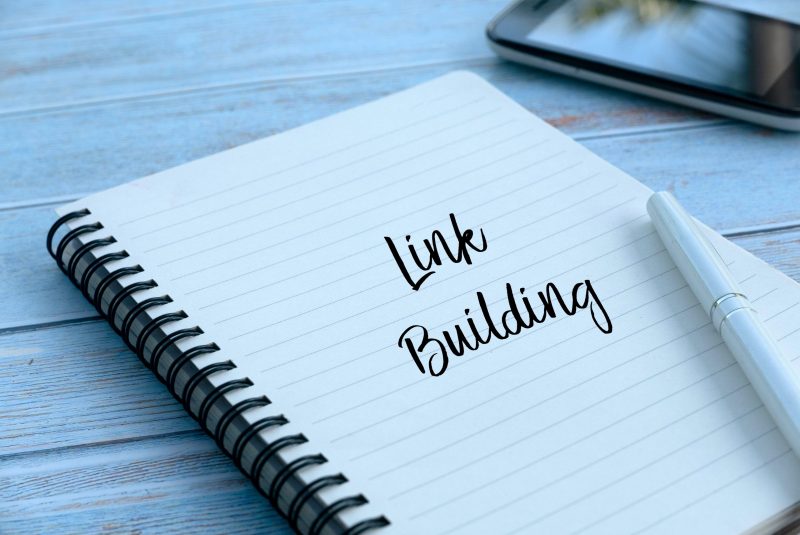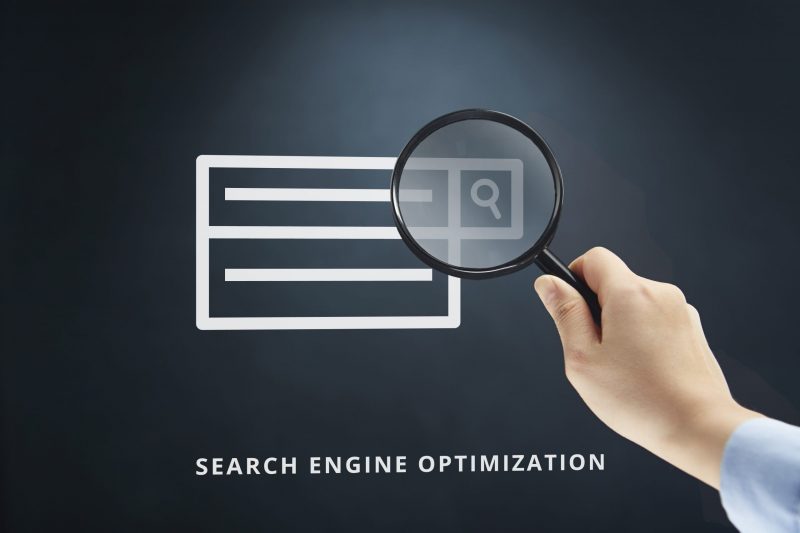You’ve spent tons of time and money optimizing your website. You’ve researched appropriate keywords. You’re writing quality content on a regular basis. But still, your website isn’t ranking on Google. So what’s the deal?
In this article, we’ll help you solve this particularly frustrating issue. While there can be various reasons that your website isn’t ranking, a few key factors are most likely responsible. First, we’ll discuss why ranking matters. Then, we’ll dive into the reasons your website ranking is so poor. We’ll break it down into four sections: indexing and crawling issues, technical issues with the website, issues with links, and issues with content and keywords. Finally, we’ll talk about ways to fix the issues.
Table of Contents
Why is website ranking so important?
The goal of your website is to generate leads for your sales team. If you’ve got a great website, you might ask yourself “Does it even matter where the leads to the website come from?” Leads can come from a variety of sources such as pay-per-click, organic search, social media, paid social media advertising, direct traffic, and email marketing. And yes, it does matter where your leads come from. If you’re looking for the most efficient and cost-effective way to bring in new leads, organic search traffic is your best bet.
Organic traffic is traffic that comes to your website from unpaid sources through search engines. Organic search allows you to be seen by real people who are looking for a solution or service that you offer. Getting traffic from real visitors (and not robots) is what translates into sales conversions at the end of the day. Another nice aspect of organic search is that it doesn’t cost anything. However, the downside is that you have to rank well on the search engine results page (SERP) in order for potential customers to see your website.
Now, let’s discuss how your website rank can improve on Google.
Indexing and crawling issues that affect website ranking
You may have a beautiful and perfectly optimized website, but your website can’t rank if it’s not on Google in the first place. In this section, we’ll discuss potential issues with Google’s indexing and crawling of your website. If you’re confused about these topics, start with reading up on how Google works and the basics of SEO.
1. Your website isn’t on Google
The first step is to check and see if you’re website is already on Google. You can do this by typing in your website URL in the Google search bar. You can also check using the site: search operator in Google. Type site: and the URL and you’ll see a list of pages found on that domain.
Let’s fix it!
If you’ve checked and your website isn’t indexed on Google, the best way to get it indexed is to go right to the source. First, create an account on Google Search Central. All you have to do is add your URL and verify that you own the domain. Once your website has been verified, you can add a sitemap. A sitemap lists all the pages on your website, which allows Google to better crawl your entire site and all of its pages.
2. Your website is too new
If your site has just launched, you might not appear in Google’s search results immediately. It takes time for Google to crawl, index, and rank your website. It can take days or even weeks for Google to complete this process.
Let’s fix it!
Be patient and give Google time to discover your new website. While you’re waiting, you can submit a sitemap to Google Search Console if you haven’t done so already. You can also check out the URL Inspection tool in Google Search Console to see how specific pages are doing. It’ll tell you how Google crawls and views your website.

3. You have a noindex meta tag on your content
If you add a noindex meta tag to a page on your website, it tells Googlebot (the name of Google’s crawler) to crawl the page, but not to add the results to the index. The noindex meta tag is commonly added to pages that are currently being worked on, but then not removed when the work is complete.
Let’s fix it!
To see if your page has a noindex meta tag, open the page and view the source code. If you find the code <meta name=”robots” content=”noindex”>, this tells crawlers that the content on the page shouldn’t be indexed. If it’s not in the index, it can’t rank. Therefore, you should remove the noindex meta tag.
4. Your website has a robots.txt file
A robot.txt file usually lives on your root domain. It contains a set of rules for search engine crawlers and tells them where they can and cannot go on your site. Search engines will not visit any pages on your website with a disallowed robots.txt file.
Let’s fix it!
If you’ve got a robots.txt file blocking Google from accessing pages on your website, you can change it by editing the file. Check out this guide to edit your robots.txt file.
Technical issues that affect website ranking
If your website is indexed, but still not ranking, you may want to check out possible technical problems. Technical SEO focuses on the technical aspects of your website such as the ability to load quickly and be user-friendly. Technical SEO will increase your website ranking on the search engine results page (SERP).
5. Your website has technical issues that keep it from ranking
In order to rank on Google, your website must meet certain technical criteria. Loading speed and security are important factors in technical SEO. Other technical issues that might prevent your website from appearing in search results are plugins conflicting with one another and causing problems and certain themes that can actually prevent Google from indexing your website.
Let’s fix it!
The solution will depend on which specific technical issue you’re having, but you can still check on the following:
- Optimize your website to keep loading times down
- Use https:// and not http://
- Update your security certificate
- Make sure your plugins and your theme are functioning properly

6. You’re using black hat SEO techniques
Black hat SEO techniques use unethical methods which violate search engine guidelines. They attempt to manipulate search engines while ignoring the experience for the users. Some examples of black hat SEO are keyword stuffing, sneaky redirects, poor quality content, and cloaking. A lot of the black hat strategies exploit loopholes in Google’s algorithm that can lead to improvements in rankings without a lot of work. Sites that use black hat strategies are at risk of losing their rankings every time there is a new algorithm update—which makes this a much more short-term approach than white hat SEO services.
Let’s fix it!
Optimize your website correctly using white hat SEO. Follow Google’s search engine guidelines. Focus on providing your audience with the best experience possible. Utilize a long-term approach and invest in content that will get results for years to come. To further make sure your search engine optimization is up to par, take advantage of SEO Design Chicago’s free website SEO analysis.
Linking issues that affect website ranking
If you want your website rank to appear on the top of Google’s SERP, you’ll need to have a good internal linking structure and quality backlinks. Googlebot crawls the web and follows each link it finds, so bad links can affect your website ranking.
7. You’re not using a proper internal linking structure
Having a proper internal linking structure is a crucial component of your SEO strategy. If your website has a clear and organized structure, Google will be able to understand it better. Even if your content is well-optimized, if you don’t have enough links and your linking structure is poor, your chances of ranking high on Google are significantly lowered. Having several web pages that are attached to one domain improves your chances of being ranked by allowing search engine crawlers to index more content.
Let’s fix it!
Add more links from one page of your website to another! Make sure your important pages have the most internal links. Also, use relevant and related links that will add value for your users.

8. Your website has no backlinks
To get your website to rank successfully, you’ll need backlinks. A backlink is a link from one website that directs the user to your website. Having other websites reference your content through backlinks offers valuable promotion and helps you gain new audiences.
Let’s fix it!
So, how do you get backlinks? Essentially, there are three ways to get backlinks:
Create them. In this strategy, you manually add links on one domain back to yours.
Buy them. In this strategy, you pay webmasters or authors for a backlink. This is against Google’s Webmaster Guidelines and can potentially result in a penalty such as losing ranking positions or getting your pages removed from the search index. This is an example of black hat SEO and is not recommended, but it is a tactic that sketchy websites use.
Earn them. You can earn backlinks in three different ways.
- You can utilize email outreach. This is when you email other website owners and editors and ask them to link to you.
- You can become a source for an online publication or media outlet. If a journalist references you in an article, they’ll often link to you and/or your social media profiles.
- You can earn backlinks organically. If someone visits your page from a link on social media, organic search, or word of mouth and decides to link to you, then that’s an earned link.
Content and keyword issues that affect website ranking
If all of the other aspects of search engine optimization are up to par on your website, your content or keywords may be causing your website to not rank.
9. There’s too much competition
If there’s too much competition for the keywords within your content, you won’t rank for that term. To figure out with you have high competition, check out the search engine results page for your keyword. If high-authority, firmly-established websites dominate the SERP, you won’t rank even if your pages are highly optimized.
Let’s fix it!
The easy strategy here is to choose keywords with less competition. However, if you want to rank for highly competitive terms, you can try the long-tail keyword strategy. A long-tail keyword is a group of words that make your search more specific. These words usually result in fewer results, but the results themselves are more precise to what a person is searching for. You can write content that targets these long-tail keywords. Once those articles start ranking, you can tackle more competitive keywords.
10. You have low-quality content or the wrong search intent
Search intent is a key factor for search engines. Search intent is the reason behind a searcher’s query. Are users looking for information, looking to buy something, or looking for a specific website? If your content doesn’t match the users’ search intent, search engines won’t show it on the SERP.
Let’s fix it!
While you can’t change the search intent, you can adapt your content strategy. Analyze the search results for your content to see if there is one type of dominant result. Are there more informational blog posts, or are images and videos more prevalent? This is a good opportunity to create content that meets your audience’s needs.

Improve your website ranking
If you’ve highly optimized your website and followed the tips in this article and your website still isn’t ranking, you may need to call in reinforcements. SEO Design Chicago offers professional SEO services, including high-quality content, link building, and keyword research. Contact SEO Design Chicago today!
FAQ
- Why is your website not ranking on Google?
- How does search intent impact your website rank?
- Why is a website rank important?
- How do you improve your website ranking?
- What is black hat SEO?



Contact Us Today!